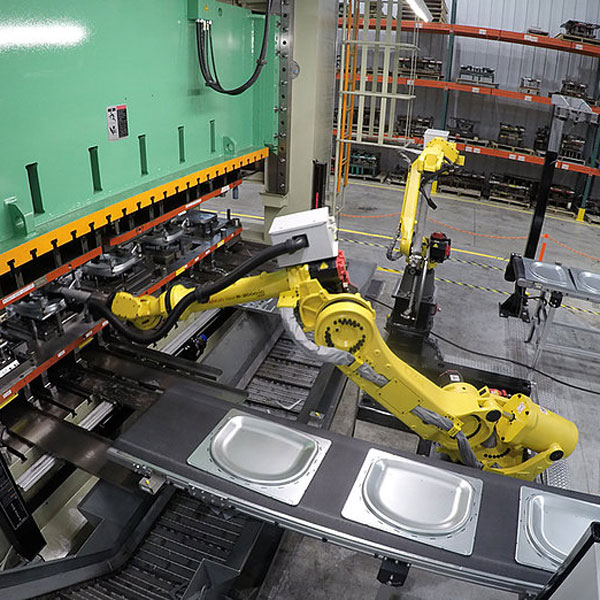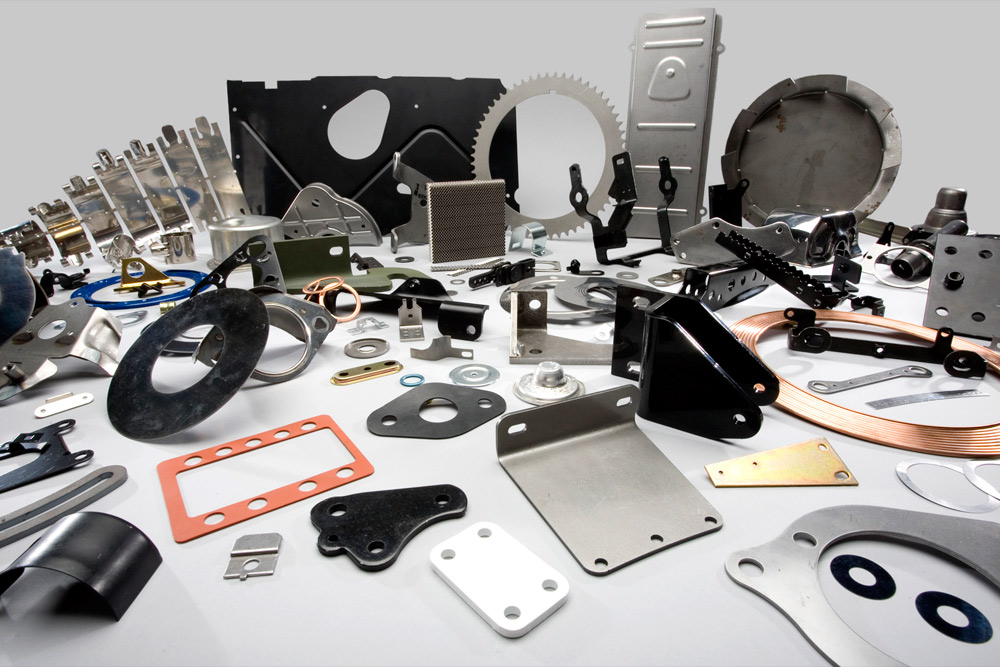Unlocking the Power of Metal Stamping: Techniques for Boosted Product Advancement
In the realm of production, the use of steel stamping holds a considerable location due to its flexibility and performance in generating elaborate components and parts. The true capacity of steel marking remains untapped by many firms looking for to boost their product development processes. By discovering sophisticated methods and strategies customized to optimize design, material selection, manufacturing efficiency, and high quality control, companies can unlock a wealth of opportunities to elevate their items to new heights of technology and efficiency.
Benefits of Metal Stamping
Metal marking deals a economical and efficient approach for creating premium metal components. One of the key advantages of metal stamping is its ability to create complex geometries with high accuracy and uniformity.
Additionally, metal stamping permits for high-volume production, making it suitable for jobs that require large amounts of metal components. The speed and repeatability of the marking procedure not just ensure price savings but additionally add to faster turn-around times for manufacturing orders. Furthermore, using automatic tools in steel marking aids decrease the danger of human mistake, resulting in enhanced general item top quality.

Design Optimization Strategies
Via careful factor to consider of product homes and geometric configurations, design optimization methods play a vital function in enhancing the efficiency and capability of steel stamping processes. By strategically examining aspects such as product strength, type, and thickness, producers can customize the design to make the most of the efficiency of the marking procedure. Utilizing simulation software program, designers can anticipate exactly how different design variations will certainly act under numerous marking problems, permitting for the recognition of possible issues before production begins.
In addition, incorporating attributes like fillets, chamfers, and embosses right into the layout can boost the total top quality of the stamped component while reducing the risk of problems such as buckling or fracturing. In addition, maximizing the design of functions on the part can improve the product circulation throughout marking, resulting in even more consistent and specific end results.
Essentially, layout optimization strategies allow manufacturers to fine-tune their steel stamping procedures, bring about enhanced item high quality, increased manufacturing performance, and inevitably, an extra competitive position on the market.
Material Selection Strategies
Design optimization techniques in steel marking procedures greatly rely upon calculated material choice techniques to ensure the preferred efficiency and effectiveness of the manufactured parts. The selection of material in metal marking is important as it straight affects the top quality, toughness, and overall performance of the end product. When selecting the appropriate product for a certain job, aspects such as mechanical residential or commercial properties, cost-effectiveness, deterioration, and formability resistance must be thought about.

Furthermore, cost-effectiveness plays a considerable function in material selection techniques. Balancing the performance requirements with the general cost of products is vital to guarantee the financial feasibility of the manufacturing procedure. Additionally, taking into consideration elements like recyclability and ecological effect can further enhance the sustainability of the picked material. By meticulously reviewing these elements, manufacturers can maximize their material option methods to accomplish exceptional product quality and operational effectiveness.
Enhancing Production Performance
Effectiveness in manufacturing processes is an essential factor for guaranteeing cost-effectiveness and timely shipment of high-quality metal marked parts. To improve production efficiency in steel marking, several techniques can be implemented.
Furthermore, applying automation and robotics in metal marking operations can significantly enhance efficiency and uniformity while minimizing labor costs. Automated systems can do repetitive jobs with high precision and speed, great site resulting in boosted manufacturing effectiveness and higher outcome prices. Spending in modern marking equipment with sophisticated functions, such as servo-driven presses and quick die adjustment systems, can even more optimize manufacturing procedures and lessen downtime.
Additionally, developing clear communication networks and promoting collaboration between design, engineering, and manufacturing groups is critical for determining potential traffic jams and carrying out continual enhancements in the manufacturing workflow - Metal Stamping. By accepting lean production principles and leveraging innovation advancements, makers can open the full potential of metal marking processes and accomplish higher manufacturing efficiency
Quality Assurance and Evaluation Approaches
To guarantee the constant manufacturing of high-grade metal stamped parts, strenuous high quality control and inspection techniques play a crucial function in validating the accuracy and integrity of the manufacturing procedure. Quality assurance in metal marking entails a series of organized checks and actions this post to ensure that each component fulfills the given needs. Evaluation methods such as aesthetic exam, dimensional analysis, and material screening are commonly employed to examine the quality of stamped elements. Aesthetic evaluations ensure the surface area coating and integrity of the parts, while dimensional analysis validates that the parts comply with the required specs. Material testing strategies like hardness testing and material structure analysis aid verify the product homes and architectural honesty of the stamped parts. In addition, advanced modern technologies such as automated optical useful content examination systems and coordinate measuring makers are increasingly being used to boost the accuracy and efficiency of quality assurance procedures in steel marking. By applying robust quality control and assessment methods, manufacturers can promote high standards of top quality and consistency in their metal stamped items.
Verdict
In conclusion, metal stamping offers numerous advantages such as cost-effectiveness, accuracy, and flexibility in product advancement. By implementing layout optimization techniques, picking suitable materials, and enhancing production performance, makers can accomplish greater top quality products with lowered preparations. Quality control and examination techniques play an essential duty in ensuring the last items meet the called for criteria. Generally, opening the power of steel marking calls for a critical method to improve product development processes.
Metal stamping offers a efficient and cost-effective method for generating high-grade steel components.Furthermore, steel stamping allows for high-volume manufacturing, making it optimal for projects that require huge quantities of steel elements.With cautious consideration of material buildings and geometric setups, design optimization techniques play a crucial function in enhancing the effectiveness and capability of metal marking processes.Style optimization methods in metal marking processes heavily count on calculated product choice strategies to make sure the desired efficiency and performance of the produced components. The choice of product in metal marking is crucial as it straight affects the quality, longevity, and general functionality of the final product.